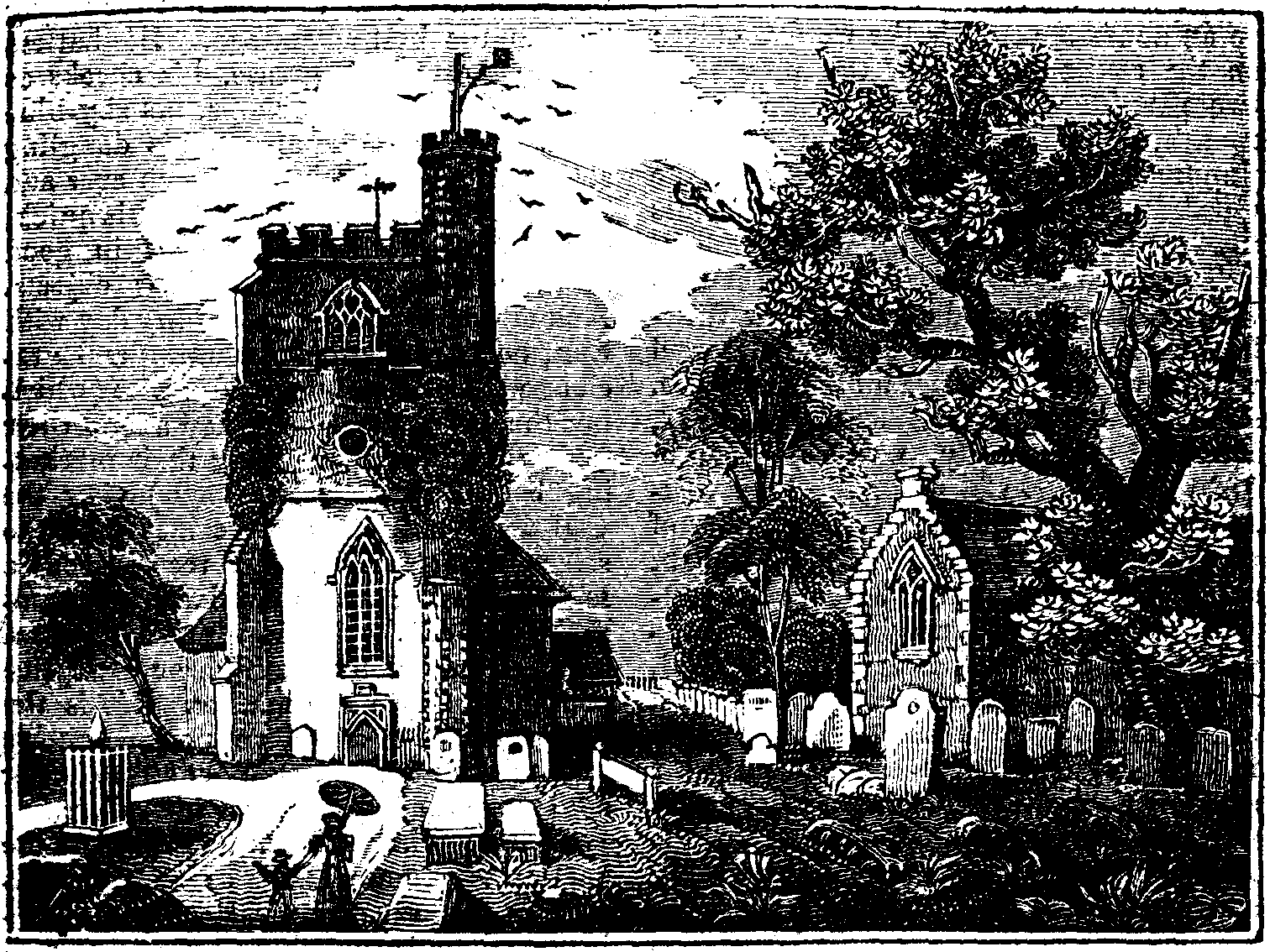THE MIRROR
OF
LITERATURE, AMUSEMENT, AND INSTRUCTION.
| Vol. 10, No. 267.] | SATURDAY, AUGUST 4, 1827. | [PRICE 2d. |
HADLEY CHURCH.
Hadley, Mankin, or Monkton, Hadley, was formerly a hamlet to Edmonton. It lies north-west of Enfield, and comprises 580 acres, including 240 allotted in lieu of the common enclosure of Enfield Chase. Its name is compounded of two Saxon words—Head-leagh, or a high place; Mankin is probably derived from the connexion of the place with the abbey of Walden, to which it was given by Geoffrey de Mandeville, earl of Essex, under the name of the Hermitage of Hadley. The village is situated on the east side of the great north road, eleven miles from London.
The manor belonged to the Mandevilles, the founder of the Hermitage, and was given by Geoffrey to the monks of Walden; in the ensuing two centuries the manorial property underwent various transmissions, and was purchased by the Pinney family, in the year 1791, by the present proprietor, Peter Moore, Esq.
The house of the late David Garrow, father to the present judge of that name in the court of exchequer, is supposed to have been connected with a monastic establishment. Chimney-pieces remain in alto-relievo: on one is sculptured the story of Sampson; the other represents many passages in the life of our Saviour, from his birth in the stall to his death on the cross.
The parish church, of which our engraving gives a correct view, is a handsome structure, built at different periods. The chancel bears marks of great antiquity, but the body has been built with bricks. At the west end is a square tower, composed of flint, with quoins of freestone; on one side is the date Anno Domini 1393, cut in stone—one side of the stone bearing date in the sculptured device of a wing; the other that of a rose. The figures denote the year 1494; the last, like the second numerical, being the half eight, often used in ancient inscriptions. The unique vestige of the middle ages, namely, a firepan, or pitchpot, on the south-west tower of the church, was blown down in January, 1779 and carefully repaired, though now not required for the purpose of giving an alarm at the approach of a foe, by lighting pitch within it. The church has been supposed to have been erected by Edward IV. as a [pg 82]chapel for religious service, to the memory of those who fell in the battle of Barnet in 1471.
On the window of the north transcept are some remains of painted glass, among which may be noticed the rebus of the Gooders, a family of considerable consequence at Hadley in the fifteenth and sixteenth centuries. This consists of a partridge with an ear of wheat in its bill; on an annexed scroll is the word Gooder; on the capital of one of the pillars are two partridges with ears of corn in the mouth, an evident repetition of the same punning device, and it is probable the Gooder's were considerable benefactors towards building the church.
The almshouses for six decayed housekeepers were founded by Sir Roger Willbraham in 1616, but so slenderly
